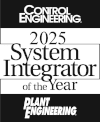How to Identify & Mitigate Plant Floor Cybersecurity Risks
Manufacturers are implementing more technology to provide efficiency, consistency and profitability. However, as the number of devices on the network continually increases, so do the implications of threat of a cyberattack. Industrial control systems (ICS) and operations technology (OT) are inherently vulnerable to cyberthreats like hackers or ransomware that can target crucial industrial processes. The effects go far beyond data breaches and have the power to upend entire industries, jeopardize security and even put lives in danger. It follows, then, that identifying and understanding security risks within your operational environment is key to minimizing the vulnerability of your control systems and plant network. This article details best practices for managing cybersecurity risks both on the floor and in the cloud. Identifying Risks from Every Angle When identifying risks and factors to consider for OT/ICS environments, the following are often noted as being most critical: Operational downtime and productivity loss: Any successful cyberattack on OT/ICS technologies could cause system downtime and significantly reduce productivity. Delivery of goods and services to customers may be delayed because of stalled production lines. As a result, financial impacts can be significant, with losses in market reputation and investor confidence in addition to revenue losses. Compromised safety systems: Extremely serious accidents can result from a breach that jeopardizes OT/ICS safety systems. For instance, a cyberattack on the control systems of a power plant could cause power outages that would impact not only businesses but also homes, hospitals and other vital services that depend on electricity. Physical harm and safety risks: Accidents and fatalities can result from a successful attack on transportation infrastructure, such as rail networks or traffic control systems. Patient safety in the healthcare industry could be put at risk by malfunctions of medical equipment controlled by OT/ICS systems. Environmental impact: Pipeline or chemical plant control system breaches can … Continued





